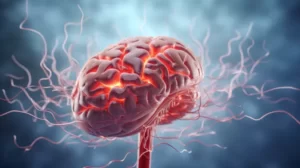The paleo diet, characterized by its avoidance of grains and other processed foods, has long been praised for its benefits in reducing autoimmune issues and inflammation. But did you know that this eating plan can also contribute to improvements in joint health and cognitive function? Here’s how the paleo diet can make a difference in these two critical areas.
Arthritis Relief
The elimination of gluten from a person’s diet can have a significant impact on the inflammation experienced by those with arthritis. In fact, ongoing inflammation in the gut, triggered by gluten, can lead to the activation of immune cells called T lymphocytes. These immune cells may eventually migrate to the joints and cause inflammation – therefore contributing to joint pain.
According to Alessio Fasano, director of the mucosal biology research center at the University of Maryland School of Medicine, “The most accredited theory is that gut inflammation triggered by gluten causes activation of T lymphocytes (immune cells) that can eventually migrate to joints, causing local inflammation and, therefore, joint pain.”
As a result, following a gluten-free diet (such as the paleo diet) may provide relief for arthritis sufferers as it addresses the root cause of their pain.
Memory Improvement
Memory loss and brain fog are common complaints that may signal a sensitivity to gluten. For individuals experiencing these cognitive issues, adopting a gluten-free diet can lead to significant improvements in mental function.
A study conducted at Monash University in Australia demonstrated that as the gut heals from inflammation caused by gluten sensitivity, cognitive performance improves as well. Participants of the study who adopted a gluten-free diet were found to have better performance on everyday tasks.
It is important to note that a definitive test to diagnose gluten sensitivity does not currently exist. Only a gluten challenge – eliminating gluten from the diet for a period of time – can provide conclusive evidence if a person feels better without gluten.
Giving up gluten and embracing a paleo lifestyle may seem overwhelming at first. However, the benefits of improved joint health and cognitive function can be achieved through consistent adherence to this dietary change.
A Few Tips for Going Gluten-Free
If you’re considering the paleo diet, you’ll need to avoid all grains, including wheat, rye, and barley. Even oats can be problematic, as they can also produce autoimmune reactions.
Making the transition to a gluten-free lifestyle doesn’t have to be difficult. Here are a few strategies to help ease the transition:
- Focus on whole foods: Instead of obsessing over what you can’t eat, focus on incorporating more whole foods into your diet. This includes fresh vegetables, fruits, lean meats, and nuts.
-
Experiment with gluten-free alternatives: Get creative with your menu planning by trying out gluten-free substitutes for your favorite meals. For example, try making pizza with a cauliflower crust or replacing traditional pasta with spaghetti squash.
-
Get support: It’s easier to make a major lifestyle change when you have the support of your family and friends. Consider joining a gluten-free support group or connecting with others who follow the paleo diet online.
By making these changes to your diet, you’ll not only support better overall health, but you’ll also specifically improve your joint and cognitive health. It’s time to embrace the paleo lifestyle and enjoy the positive impact it can have on your life.



